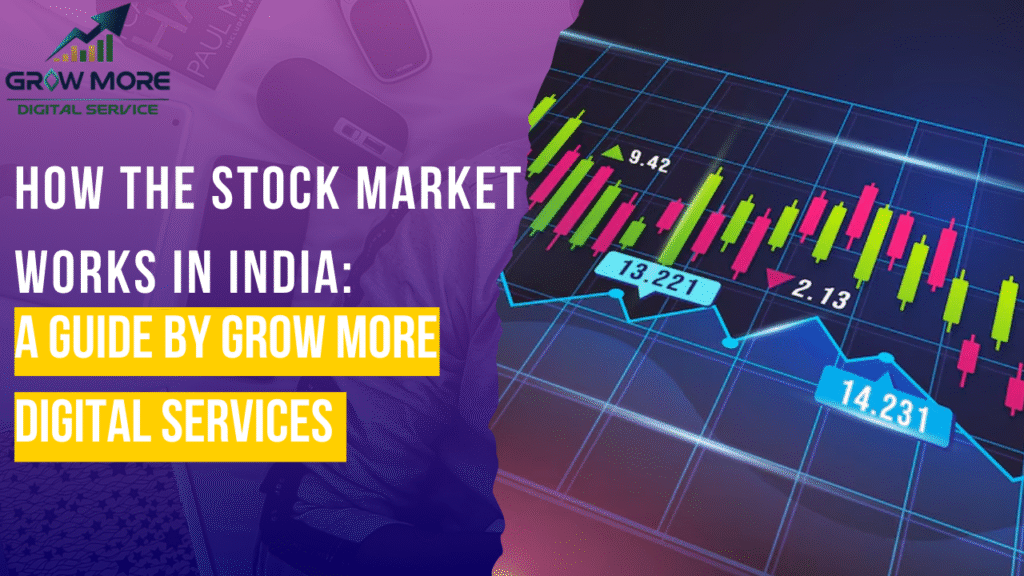Investing in the stock market with a long-term view is one of the most effective strategies for building wealth. As we step into 2025, India’s economic landscape is marked by robust growth in sectors like banking, technology, energy, and manufacturing. For investors seeking sustainable returns, choosing fundamentally strong companies with proven track records and forward-looking strategies is crucial. Based on recent financial performance, market sentiment, and future prospects, here are the top 5 stocks for long-term growth in India in 2025. 1. HDFC Bank Ltd Why HDFC Bank? HDFC Bank remains a cornerstone of India’s financial sector, consistently delivering strong growth and profitability. For FY25, the bank reported a net profit of ₹70,792 crore, up 16% year-on-year, and total revenue of ₹3,46,150 crore, up 12.5% YoY. Its Return on Equity (ROE) stands at a healthy 16.88%, and the asset quality continues to improve with Gross NPAs at just 1.33% as of March 2025. Analyst sentiment is overwhelmingly positive, with over 92% recommending a ‘Buy’ and a target price of ₹2,163.07. The bank’s expanding digital footprint, robust risk management, and focus on retail and SME lending make it a reliable long-term bet. 2. Reliance Industries Limited (RIL) Why Reliance Industries? Reliance Industries is a diversified conglomerate with interests in energy, retail, digital services, and now, new energy and battery operations. In FY25, RIL’s Oil & Gas business posted record EBITDA, while the Retail and Digital Services segments delivered consistent growth. The company is aggressively investing in 5G, AI, and renewable energy, positioning itself as a leader in India’s digital and green transition. With a strong balance sheet, strategic recalibration in retail, and a vision for new energy, Reliance is set to deliver value for decades. 3. Cigniti Technologies Ltd Why Cigniti Technologies? Cigniti Technologies is a leading player in digital assurance and quality engineering services. The company reported a robust quarterly profit growth of 169.53% and a sales growth of 16.38%, with a healthy Return on Capital Employed (ROCE) of 34.15%. With a low debt-to-equity ratio (0.03) and a promoter holding of 55.16%, Cigniti is well-placed to benefit from the global digital transformation wave. Its focus on AI-driven testing and digital assurance for enterprises worldwide makes it a compelling long-term growth stock. 4. Escorts Kubota Ltd Why Escorts Kubota? Escorts Kubota, a major player in the agricultural machinery and construction equipment space, continues to benefit from India’s rural growth and infrastructure push. The company boasts a market capitalization of ₹37,162 crore and a strong ROCE of 14.03%. Its strategic partnership with Kubota and focus on innovation, automation, and exports provide a solid foundation for future expansion. With India’s agriculture sector modernizing rapidly, Escorts Kubota is well-positioned for sustained long-term growth. 5. Bio Green Papers Ltd Why Bio Green Papers? Bio Green Papers is emerging as a leader in the sustainable packaging and paper industry. The company reported a quarterly profit growth of 16237.5% and sales growth of 25.96%. With a high promoter holding (81.79%) and zero debt, Bio Green Papers is capitalizing on the global shift toward eco-friendly packaging. As environmental regulations tighten and demand for sustainable products rises, Bio Green Papers is poised for multi-year growth. Summary Table: Top 5 Long-Term Growth Stocks for 2025 Company Sector Key Strengths HDFC Bank Ltd Banking/Finance Consistent profit growth, digital expansion, low NPAs Reliance Industries Conglomerate Diversified, digital/energy focus, strong retail Cigniti Technologies IT Services High growth, digital assurance, low debt Escorts Kubota Manufacturing Agri & infra focus, strategic partnerships Bio Green Papers Paper/Packaging Sustainable growth, zero debt, eco-friendly trend How to Approach Long-Term Investing Final Thoughts The Indian stock market in 2025 offers exciting opportunities for long-term investors. HDFC Bank, Reliance Industries, Cigniti Technologies, Escorts Kubota, and Bio Green Papers stand out for their robust fundamentals, visionary leadership, and growth potential. Always conduct your own research or consult a financial advisor before investing. Happy investing and may your portfolio grow steadily in the years ahead!











